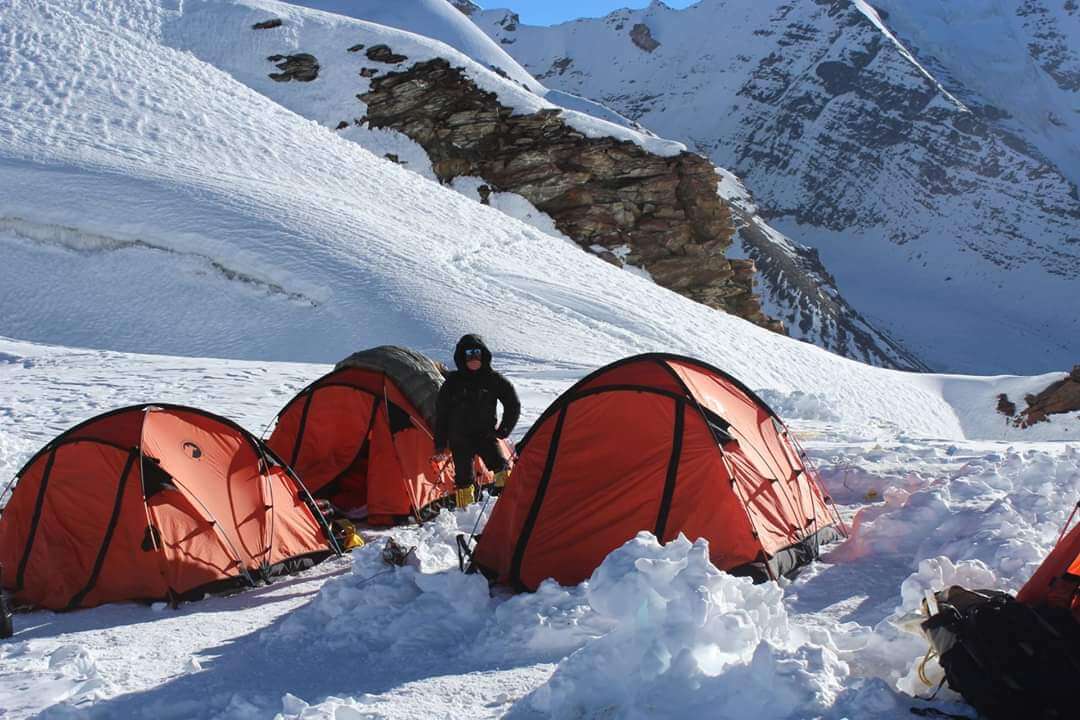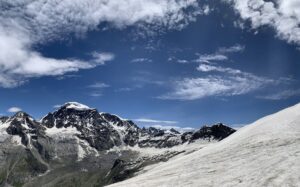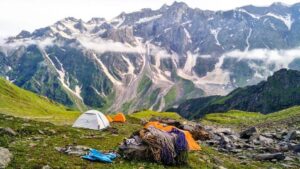The Mt. Nun Expedition, offered by Himalayan Adventure Trips, is a pinnacle of mountaineering adventures, beckoning intrepid souls to conquer the majestic peak of Mt. Nun. Situated in the Ladakh region of the Indian Himalayas, Mt. Nun stands tall at an elevation of 7,135 meters (23,409 feet) above sea level, challenging climbers with its awe-inspiring altitude and technical intricacies.
This expedition begins in Leh, a high-altitude desert town, where adventurers arrive and undergo essential acclimatization to adapt to the thin air. The journey commences with a trek from Leh to the Base Camp at Karsha Gonpa via the picturesque Sumdo Village. As the expedition progresses, participants traverse through breathtaking landscapes, including high-altitude passes, vast glaciers, and rugged terrains.
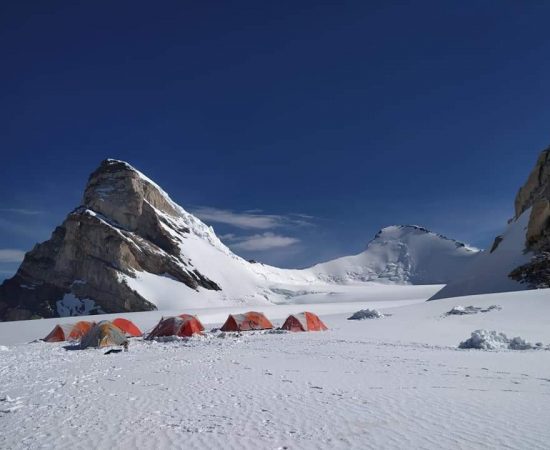


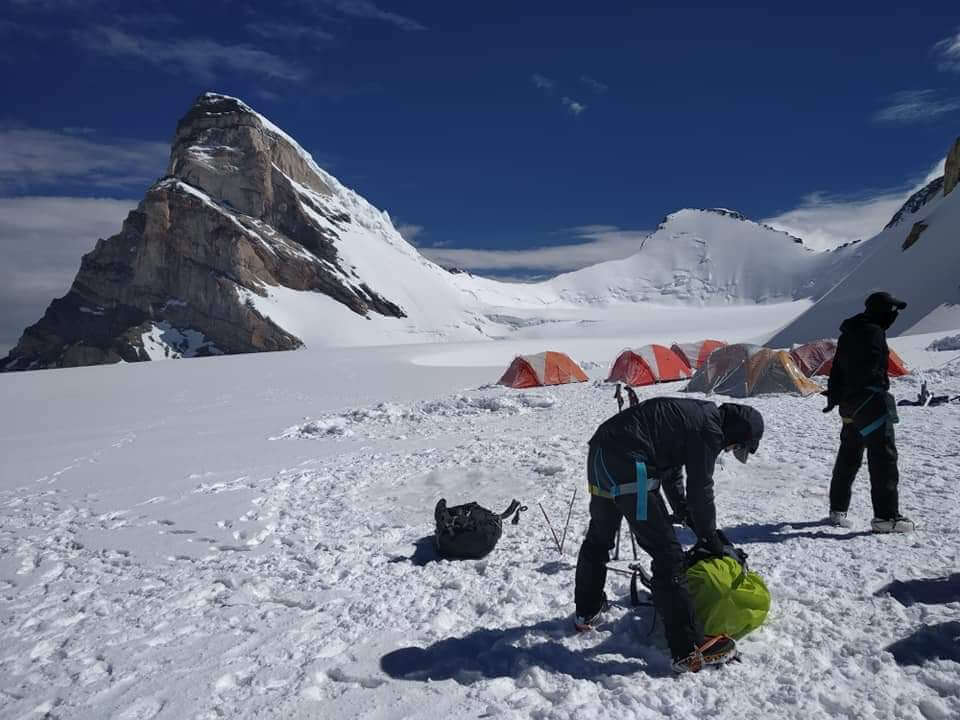
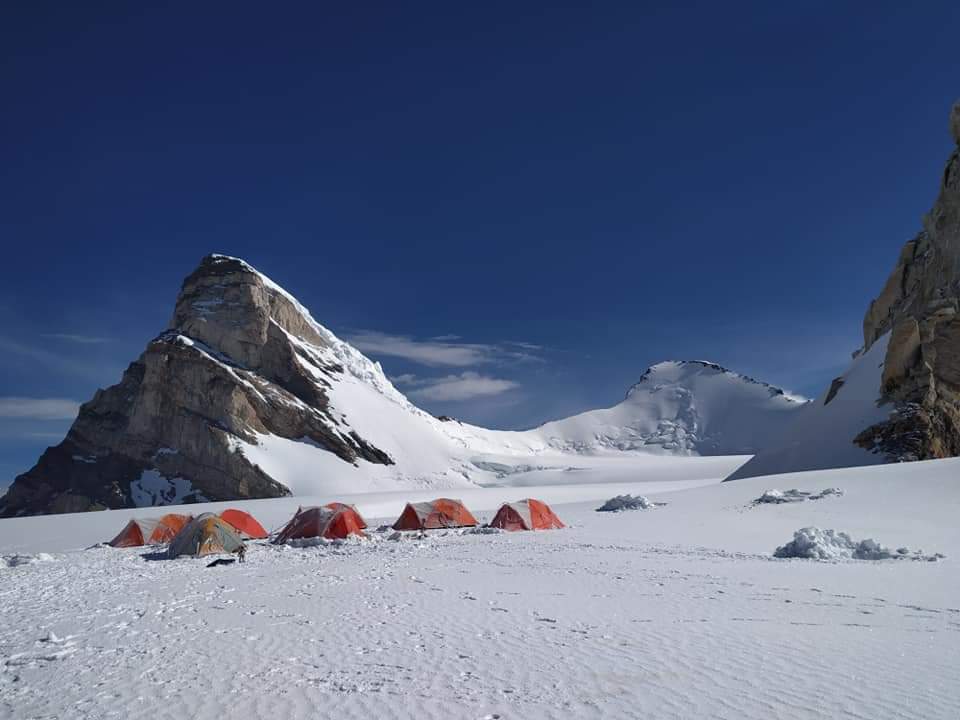
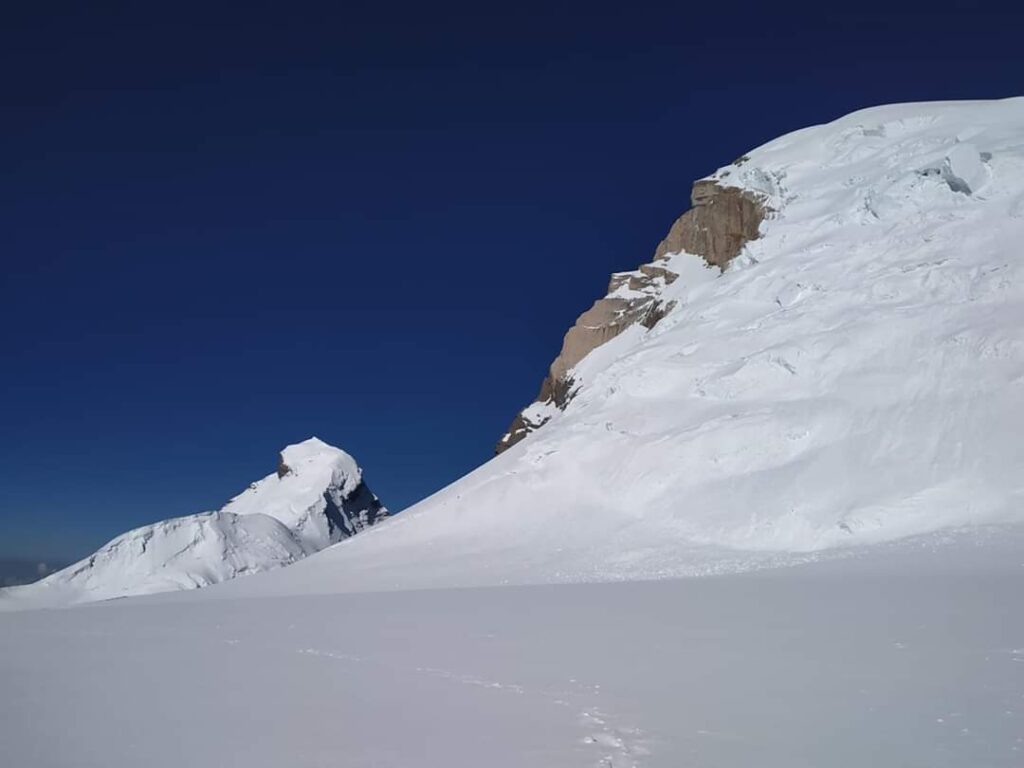
Detailed Itinerary of Mt. Nun Expedition
Day 1–3: Arrival in Leh, acclimatization, and trek briefing
Day 4–8: Trek from Leh to Base Camp (Karsha Gonpa) via Sumdo Village
Day 9–15: Establishing higher camps and acclimatization hikes
Day 16–22: Summit push and descent to Base Camp
Day 23–25: Trek back to Leh, concluding the expedition
Gear Needs for Trekking
Gear needs for trekking during the Mt. Nun Expedition are crucial to ensure climbers are well-equipped to navigate the challenging terrain and extreme weather conditions encountered in high-altitude mountaineering. Here’s a comprehensive list of essential gear required for the expedition:
↬ Clothing Layers
- Thermal base layers to manage body temperature
- Insulating fleece or down jackets for warmth
- Quick-drying trekking pants and shorts
- Moisture-wicking shirts and breathable t-shirts
↬ Footwear
- High-quality, insulated trekking boots with good ankle support
- Gaiters to prevent snow, debris, and water from entering boots
- Lightweight and moisture-wicking trekking socks
↬ Climbing Equipment
- Climbing harness suitable for high-altitude climbing
- Crampons for traction on icy surfaces
- Ice axe for stability and self-arrest
- Ropes, carabiners, and ascenders for safety and support
↬ Sleeping Gear
- High-altitude sleeping bag suitable for extreme cold conditions
- Insulated sleeping pad for insulation from the cold ground
↬ Headgear and Eyewear
- Insulated and windproof beanie or balaclava
- Sunglasses and side shields
- Sun hat or cap for sun protection
↬ Climbing Accessories
- Trekking poles for stability and support
- Headlamp or torch with extra batteries for night treks
↬ First Aid and Personal Care
- Basic first aid kit with essentials for minor injuries
- High SPF sunscreen and lip balm with UV protection
- Personal toiletries and hygiene essentials
↬ Backpack and Gear Carriers
- Sturdy and comfortable backpack with proper support and capacity
- Waterproof backpack covers or dry bags to protect gear from rain and snow
↬ Navigation and Communication
- Topographic maps and a compass or GPS device
- Radios and satellite communication devices for emergencies
↬ Miscellaneous
- Water bottles to stay hydrated
- Lightweight, quick-drying towels
- Multi-tool knife or utility tool
Eligibility
- Minimum Age Requirement: Participants are typically required to be at least 18 to 21 years old to join the expedition. This age range ensures that participants have the necessary maturity, physical stamina, and understanding of the challenges involved in high-altitude climbing.
- Maximum Age Limit: While there might not be a strict upper age limit, individuals above a certain age, often around 65 or 70 years, might need to undergo additional medical evaluations to ensure they are physically fit for the rigorous demands of the expedition.
- Physical Fitness: Regardless of age, participants must be in excellent physical condition, irrespective of their age bracket. This includes endurance, strength, cardiovascular fitness, and agility, essential for navigating challenging terrains and high altitudes.
- Acclimatization Ability: The ability to acclimatize to high altitudes is crucial. Older participants might need to acclimatize more slowly than younger individuals due to potential differences in their physiological responses to altitude.
- Experience and Fitness Levels: While age is a factor, the emphasis is more on the individual’s physical fitness, previous high-altitude trekking or climbing experience, and overall health rather than a specific age bracket.
Contingency Days During the Expedition
- Adaptability to Weather Conditions: Contingency days offer adaptability to unpredictable weather changes common in mountainous regions. Adverse weather conditions such as heavy snowfall, storms, or high winds may necessitate delays in the expedition schedule, and these additional days allow for such adjustments.
- Acclimatization and Health: The additional days contribute to the process of acclimatization, allowing participants more time to adjust to high altitudes gradually. This assists in preventing altitude-related health issues and ensures climbers are physically prepared for the challenges ahead.
- Route Challenges and Technical Sections: Contingency days account for challenges in the trekking route, including technical sections that may be more demanding or time-consuming than anticipated. They provide a cushion to manage unexpected obstacles or difficult terrain encountered along the way.
- Rest and Recovery: Participants may require additional rest or recovery time due to fatigue, minor injuries, or other personal reasons. Contingency days provide the opportunity for rest, allowing individuals to recharge and continue the expedition safely.
- Summit Attempts: In case the initial summit attempt faces challenges such as adverse weather or poor conditions, these spare days offer an opportunity for a subsequent summit push, maximizing the chances of a successful ascent.
- Flexibility and Safety: Incorporating contingency days ensures flexibility in the expedition schedule, prioritizing the safety and well-being of climbers. It allows the expedition leaders to make informed decisions, ensuring a safer and more successful climb.
Skills/Prior Experience Required for this Climb
- Ice Climbing Skills: Proficiency in ice climbing techniques is essential as the climb may involve traversing glaciers, ice walls, and technical ice sections. Competency in using ice axes, crampons, and ropes is crucial for navigating such terrain.
- Mountaineering Experience: Prior experience in high-altitude mountaineering expeditions is highly recommended. Familiarity with the challenges of high-altitude trekking, navigating crevasses, and glacier travel is advantageous.
- Physical Fitness: Excellent physical fitness is paramount. Participants should have robust cardiovascular endurance, strength, stamina, and flexibility to endure the physical demands of the climb. Pre-expedition training focusing on cardio, strength, and endurance is beneficial.
- Altitude Acclimatization Skills: Understanding and experience in acclimatizing to high altitudes are vital. Knowledge of gradual ascent strategies, recognizing symptoms of altitude sickness, and adjusting to thin air are essential for a successful ascent.
- Rope Handling and Knots: Proficiency in handling ropes, tying knots, and using climbing gear is crucial for safety during the ascent. Skills in belaying, rappelling, and securing oneself while climbing are essential.
- Navigation and Route Finding: Ability to navigate and read mountainous terrain, interpret topographical maps, and make informed route-finding decisions are important skills required for this climb.
- Teamwork and Communication: Strong teamwork skills and effective communication with fellow climbers and expedition leaders are essential for ensuring safety, coordination, and support during the climb.
- Decision-making and Risk Management: Experience in assessing risks, making sound decisions under challenging conditions, and understanding when to proceed or retreat is crucial for mountaineering safety.
- First Aid and Emergency Response: Basic knowledge of wilderness first aid, handling emergencies, and administering aid in mountain environments is valuable.
- Mental Preparedness: A resilient mindset, determination, and mental preparedness to face the physical and mental challenges of high-altitude climbing are crucial for a successful summit attempt.
Key Points of Mt. Nun Expedition
- An elevation of 7,135 meters above sea level
- Offers panoramic views of the Karakoram Range and Zanskar Valley
- Requires technical climbing expertise in some sections
- Requires rigorous training and physical preparedness.
- Expert guidance provided by Himalayan Adventure Trips’ experienced mountaineers.
- Offers stunning views and an unforgettable experience at high altitudes.
- Emphasizes safety and adherence to proper acclimatization protocols.
Highlights of Mt. Nun Trek
- Majestic Summit Elevation: Scaling the majestic heights of Mt. Nun, standing proudly at 7,135 meters (23,409 feet) above sea level, offers a breathtaking challenge and an unforgettable accomplishment.
- Spectacular Himalayan Vistas: The trek boasts awe-inspiring panoramic views of the surrounding Himalayan peaks, including the Karakoram Range, providing a mesmerizing visual treat for climbers.
- Technical Challenges: The climb involves navigating technical sections that test climbers’ skills in ice climbing, rope handling, glacier traversing, and mountaineering expertise, offering a thrilling and challenging experience.
- Cultural Encounters: Immersion in the rich Ladakhi culture along the trekking route, allowing participants to engage with local traditions, customs, and the warmth of the mountain communities.
- Glacier Crossings: Traverse across vast glaciers, providing an opportunity to experience the sheer magnitude and beauty of these icy landscapes, showcasing nature’s breathtaking beauty.
- Summit Achievement: Standing atop the summit of Mt. Nun represents an immense achievement, marking the successful conquest of a formidable peak in the Indian Himalayas.
- High-Altitude Passes: Crossing high-altitude passes during the trek presents stunning vistas and thrilling challenges, enriching the trekking experience with varied landscapes.
- Camaraderie and Team Spirit: Building camaraderie and fostering teamwork among fellow climbers while overcoming challenges, creating lasting bonds and shared triumphs.
- Striking Landscapes: Trekking through diverse terrains, including rugged valleys, alpine meadows, and rocky landscapes, each offering unique and breathtaking scenery.
- Personal Growth: The trek is not only a physical challenge but also a journey of self-discovery, resilience, and personal growth, fostering determination and strength of character.
Altitude Covered in Mt. Nun Trek
- The trek starts at Leh (3,524 meters) and ascends to Mt. Nun’s summit at 7,135 meters.
Best Time to Visit Mt. Nun Trek
- Ideal months are July to September, when weather conditions are relatively favorable.
Things Himalayan Hikers Recommend
- Pre-expedition physical fitness training for endurance
- Regular hydration and adequate rest during the trek
- Open-mindedness and flexibility to adapt to changing weather conditions
The Mt. Nun Expedition with Himalayan Adventure Trips is not just a climbing adventure; it’s a transformative journey that tests one’s physical and mental boundaries. It demands expertise in ice climbing, rope handling, and glacier travel, making it suitable for experienced mountaineers seeking the ultimate challenge.
Himalayan Adventure Trips stands as a beacon of trust and reliability, guiding adventurers through this incredible journey with meticulous planning, safety measures, and a commitment to ensuring a memorable and secure expedition. For those willing to embrace the heights, push their limits, and stand atop the majestic peak of Mt. Nun, this expedition promises an unforgettable experience of conquering the Himalayan giant with confidence and prowess.

